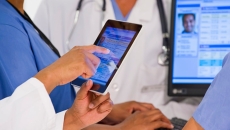Interoperability
Patient identity is a great weakness in healthcare infrastructure, according the physician informaticist who led the algorithm research, which is aimed at boosting interoperability and patient safety.
Wolfgang Mertz, CTO for Unstructured Data Solutions, says Dell Technologies is helping healthcare providers consolidate data – which enables easy access to precision medicine and supports cyber protection strategies.
Cloud-based indexing can fix duplicate patient records, improving interoperability and patient outcomes for health information exchanges like etHIN.
After two years of corporate streamlining, the longtime health IT vendor will offer connectivity and analytics tools under a new name.
The hospital attained the highest score for the year 2022.
Tom Leary, Valerie Rogers and David Gray of the HIMSS Government Relations team unpack what the federal and state ballot results will hold for health policy going forward.
Workforce challenges, patient engagement efforts, ongoing interoperability hurdles and some big announcements from legacy EHR and Big Tech players were among the news and reports that captured the most attention this past year.
The CGO will advance the county’s Aging Roadmap by helping to improve the coordination of health and social services and the detection, diagnosis and management of age-related diseases.
Leveraging AI, machine learning and neural networks can help healthcare standardize data, comply with info blocking requirements and improve health outcomes.
The guide is meant to improve data sharing among providers and public health agencies and enable semantic interoperability between sending and receiving systems, helping healthcare organizations incorporate shared data more easily into clinical workflows.









